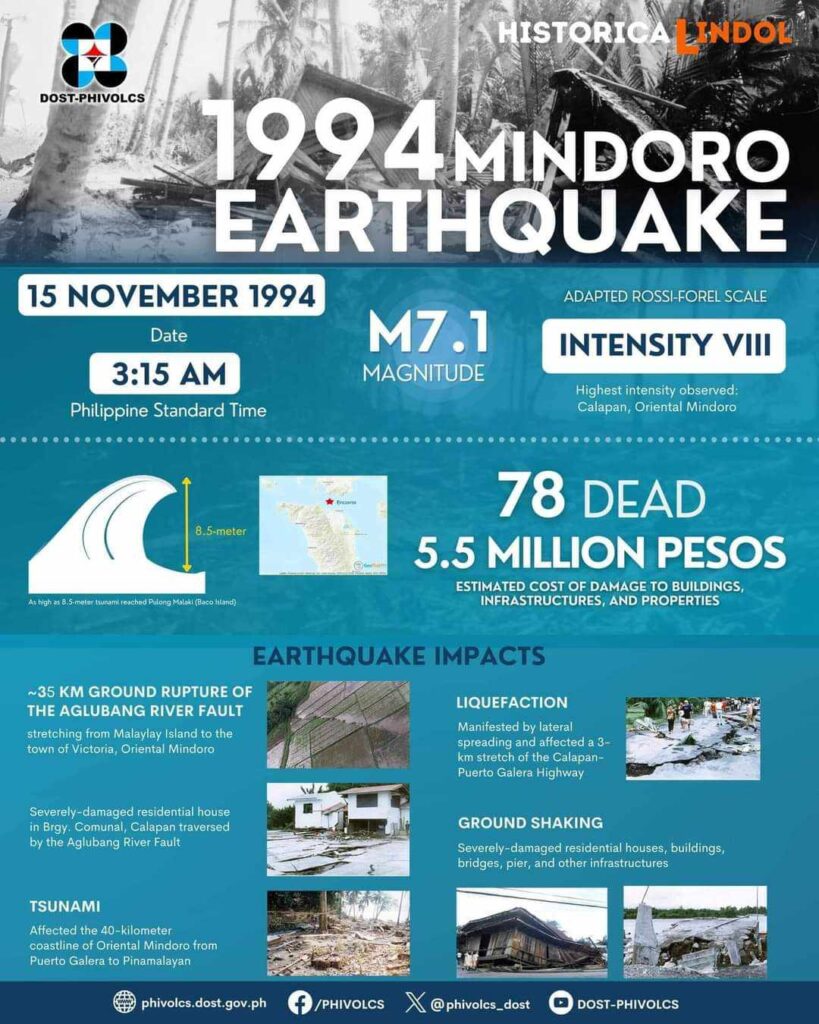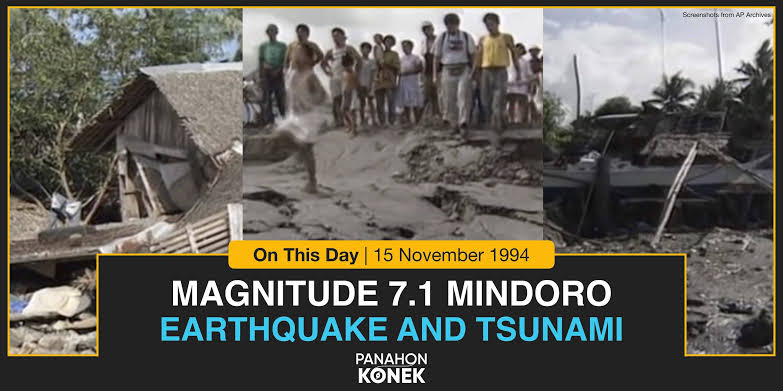Thirty years after one of the Philippines’ most devastating seismic events, the 1994 Mindoro Earthquake remains etched in the memories of those who lived through its terrifying moments.
The powerful magnitude 7.1 tremor struck Oriental Mindoro at 3:15AM on November 15, 1994, forever changing the landscape and lives of its residents.
In a Facebook post today, Oriental Mindoro First District Representative Arnan C. Panaligan, who experienced the earthquake firsthand, shared his haunting recollection of that fateful morning.
“I was awakened by the intense shaking. It was scary and I thought our house would collapse,” he recounted.
“When the quake stopped, I ran out of my room and knocked at my parents’ room. We went down groping our way in the darkness as the lights went off.”
The earthquake, which reached an intensity VIII on the Rossi-Forel scale in Calapan, Oriental Mindoro, triggered a series of devastating impacts.
According to DOST-PHIVOLCS data, the tremor caused a massive 35-kilometer ground rupture along the Aglubang River Fault, stretching from Malaylay Island to the town of Victoria, Oriental Mindoro.
“We stayed in the garden as aftershocks repeatedly occurred,” Rep. Panaligan continued. “When the morning light came and we entered our house, we saw that everything was in disarray. Furnitures and fixtures were in shambles. Vases were broken and grocery items that fell from the shelves littered the floor. It was an unforgettable experience.”
The earthquake’s destruction was extensive. It generated an 8.5-meter tsunami that reached Putong Malaki in Baco Island and affected a 40-kilometer coastline from Puerto Galera to Pinamalayan.
Massive liquefaction was observed along a 3-kilometer stretch of the Calapan-Puerto Galera Highway, manifesting as lateral spreading that severely damaged the infrastructure.

The human and economic toll was devastating.
Official records show that 78 people lost their lives, and the earthquake caused an estimated P5.5 million pesos in damage to buildings, infrastructures, and properties.
Residential areas were particularly hard hit, with severe damage reported in Barangay Comunal, Calapan, where houses along the Aglubang River Fault suffered extensive destruction.
In total, 78 lives were lost, with 41 fatalities directly attributed to the tsunami that followed shortly after the quake.
Between 225 to 340 people were reported injured, and over 7,500 houses were damaged or destroyed.
The earthquake triggered a tsunami that struck coastal communities with devastating force.
Wave heights reached up to 8.5 meters (approximately 28 feet) in some areas, particularly impacting Barangay San Andres in Baco, Oriental Mindoro.
The tsunami inundated not only Mindoro but also affected parts of Luzon and the nearby Verde Island.
The 1994 Mindoro Earthquake stands as a somber reminder of the country’s vulnerability to seismic activities and the necessity of disaster preparedness.
Three decades later, its impact continues to influence local disaster risk reduction policies and building practices in the country.
As Rep. Panaligan’s personal recollection illustrates, the earthquake left an indelible mark on the collective memory of Mindoro’s residents, serving as a non-expiring lesson in resilience and the need for continued vigilance in the face of natural disasters.









Write Your Comment